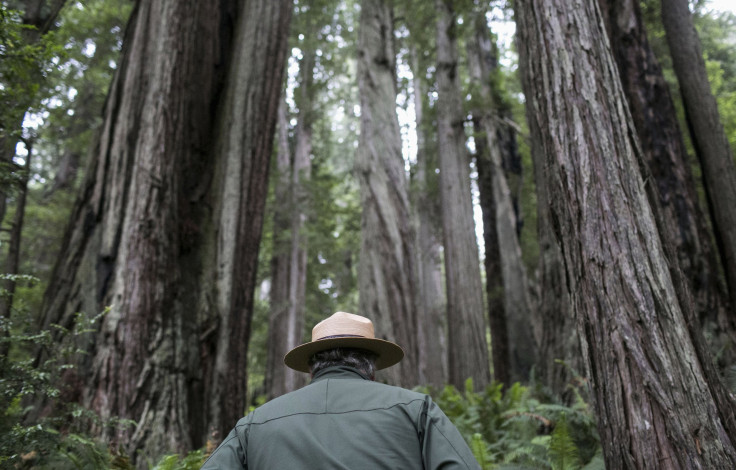California Trees Shrinking? What Climate Change Means For State’s Forests

California’s forests are shrinking because of climate change as rising global temperatures have exacerbated water deficits in the state, according to a new study published this week in the journal Proceedings of the National Academy of Sciences. Researchers found that the number of trees with diameters greater than 2 feet has halved in the last 85 years. At the same time, trees with smaller diameters – less than a foot – have proliferated. By 2100, California’s forests will be much slighter versions of their former selves, as drier conditions support smaller forest growth.
Several factors have worked in tandem to shrink California’s forests, but climate change has had the most dramatic impact, researchers said. "Older, larger trees are declining because of disease, drought, logging and other factors, but what stands out is that this decline is statewide," Patrick McIntyre, study author and data manager for the California Department of Fish and Wildlife, said in a statement. "Forests are becoming dominated by smaller, more densely packed trees, and oaks are becoming more dominant as pines decline."
Oak trees prosper in dry, warm climates. The increase in oak growth in California is a sure sign that climate change has affected the type of new growth taking place across the state.
California has suffered its worst drought on record in recent years. Over 77 percent of the state has experienced extreme drought or worse, and the outlook for 2015 is just as desolate, according to the U.S. Drought Monitor. Drier conditions cause large trees to lose more water to the surrounding air, and earlier snowpack melt in the mountains has meant less water during the hotter months to sustain large tree growth.
Scientists compared forest density studies from the 1920s and 1930s to surveys done between 2001 and 2010. They found that in the higher counties of the Sierra Nevada mountains, the number of large trees fell by more than 55 percent. In other parts of the state, big tree decline was as high as 75 percent. "The loss of these majestic largest trees is a pretty emotionally powerful thing to think about,” William Anderegg, a forest ecologist at Princeton University in New Jersey, told National Geographic. “These are often the trees that have been around for thousands of years. It’s kind of a less magical future having lost those trees.”
© Copyright IBTimes 2025. All rights reserved.






















